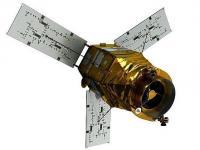KOMPSAT-3 is an optical high-resolution Korean observation mission of KARI (Korea Aerospace Research Institute). The mission is funded by MEST (Ministry of Education, Science and Technology). The project was started in 2004. The objective is to provide observation continuity from the KOMPSAT-1 and KOMPSAT-2 missions to meet the nation's needs for high-resolution optical imagery required for GIS (Geographical Information Systems) and other environmental, agricultural and oceanographic monitoring applications.
A further goal is to meet the nation's satellite demand and form a technology infrastructure that will make inroads into the world space industry at a stage when the industry is improving the capability to design and develop highly advanced remote sensing satellites.
Instrument: AEISS (Advanced Electronic Image Scanning System)
- 5 spectral bands (Panchromatic, blue, green, red, NIR)
- swath width: 16km (at nadir)
